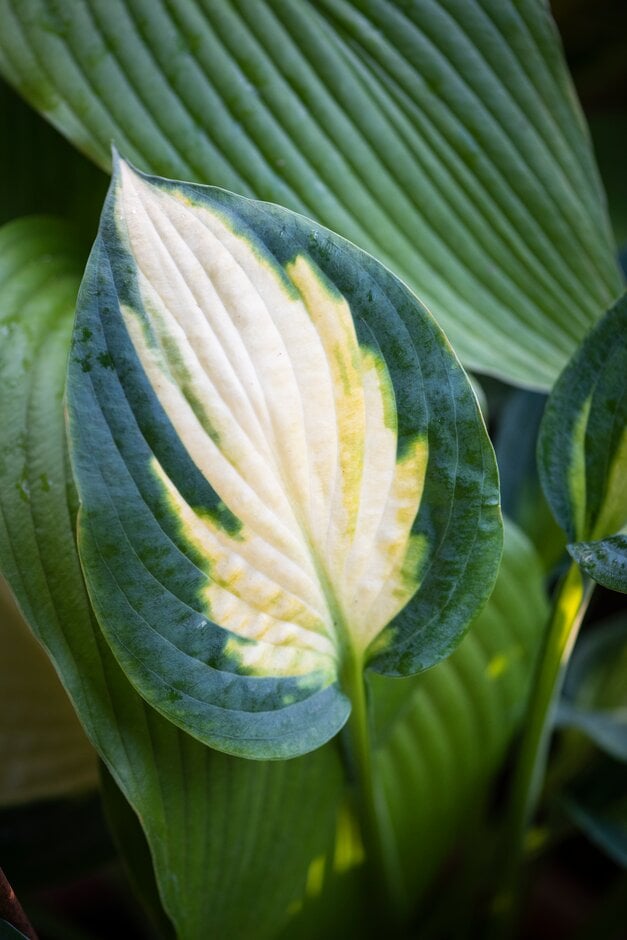Hosta 'Forbidden Fruit'PBR (v)
plantain lily 'Forbidden Fruit'
A clump-forming perennial with thick, variegated leaves that have yellow-pale orange centres surrounded by wide, blue to dark green margins. Lavender flowers are borne on upright stems in summer
Size
Ultimate height
0.5–1 metresTime to ultimate height
2–5 yearsUltimate spread
0.5–1 metresGrowing conditions
Moisture
Moist but well–drainedpH
Acid, Alkaline, NeutralColour & scent
| Stem | Flower | Foliage | Fruit | |
| Spring | Variegated Green Yellow | |||
|---|---|---|---|---|
| Summer | Purple | Variegated Green Yellow | ||
| Autumn | Variegated Green Yellow | |||
| Winter |
Position
- Partial shade
Aspect
North–facing or East–facing or West–facing
Exposure
Sheltered Hardiness
H7Botanical details
- Family
- Asparagaceae
- Native to GB / Ireland
- No
- Foliage
- Deciduous
- Habit
- Clump forming
- Genus
Hosta are clump-forming herbaceous perennials with simple, ovate or lance-shaped leaves, often attractively coloured or variegated, and erect racemes of nodding, funnel or bell-shaped flowers in early summer
- Name status
Accepted
How to grow
Cultivation
Grow in a fertile, moist but well-drained soil in partial shade with shelter from cold, drying winds. See hosta cultivation for further information
Propagation
Propagate by division in early spring or late summer
Suggested planting locations and garden types
- City and courtyard gardens
- Cottage and informal garden
- Patio and container plants
Pruning
Remove spent foliage as required and clear up dead leaves at the end of the growing season
Pests
May be susceptible to slugs and snails; plants in pots may be susceptible to vine weevil
Diseases
May be susceptible to a virus
Get involved
The Royal Horticultural Society is the UK’s leading gardening charity. We aim to enrich everyone’s life through plants, and make the UK a greener and more beautiful place.
